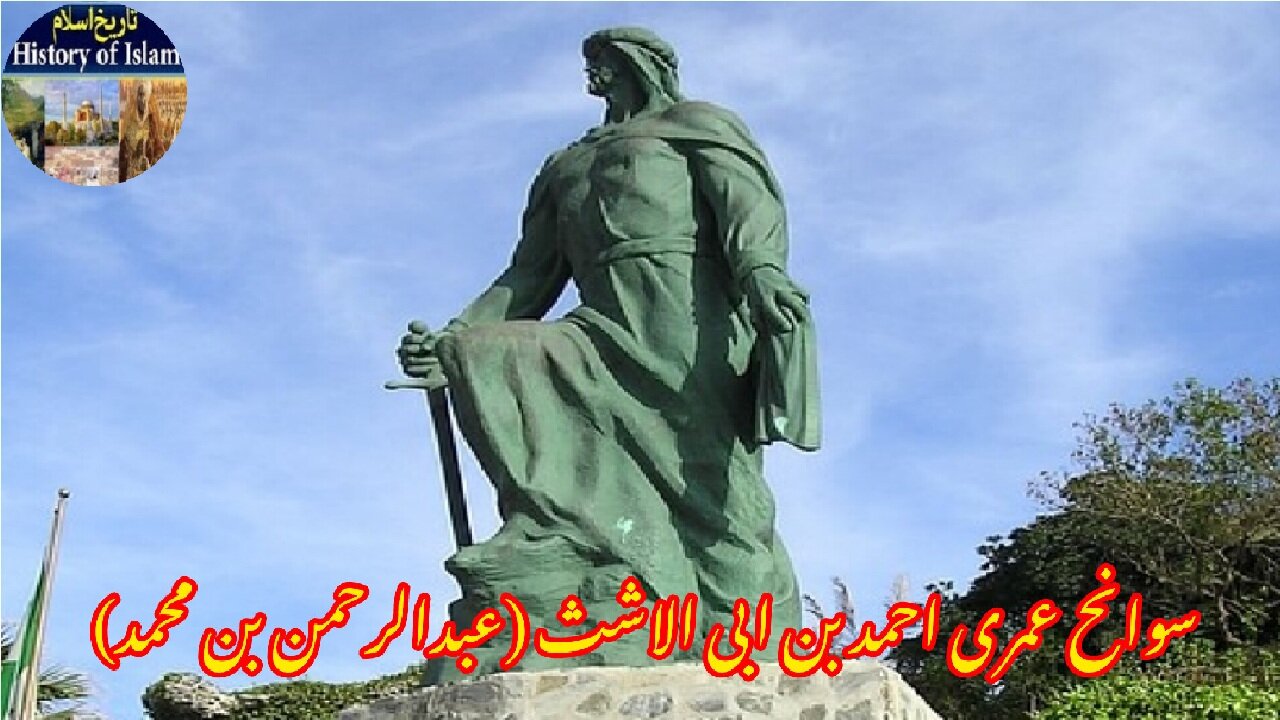Premium Only Content

Biography Abd al-Rahman ibn Muhammad ibn al-Ashath سوانح عبدالرحمٰن بن محمد بن العاشث
@islamichistory813 #ahmadibnabialashath #biography #islamichistory #islamicscholars #islam #history #scholars #hadith #quran #sunnah #islamic #legacy #heritage #wisdom #fiqh #knowledge #tafsir #faith #guidance #islamicworld #muslim #islamiclegacy #imams #islamiccivilization #goldenage #truth #ummah
Biography Ahmad ibn Abi al-Ashath (Abd al-Rahman ibn Muhammad ibn al-Ashath)
Asslamoalaikum, We welcome you in our series Muslim Heritage and Islamic Scholars, today we will describe Biography of Ahmad ibn Abi al-Ashath (Abd al-Rahman ibn Muhammad ibn al-Ashath)
Abd al-Rahman ibn Mu?ammad ibn al-Ashath, better known as Ibn al-Ashath, was one of the most prominent Arab nobles and military commanders during the early Umayyad Caliphate. He was born around 640 CE in Kufa, Iraq, into a noble Arab family belonging to the Kinda tribe. His lineage carried immense prestige, for he was the grandson of al-Ashath ibn Qays al-Kindi, a well-known companion of the Prophet Muhammad (PBUH), and through this connection, he was also related to the first Rashidun Caliph, Abu Bakr al-Siddiq (RA), since his father Mu?ammad ibn al-Ashath was Abu Bakr’s great-nephew. This noble ancestry granted Ibn al-Ash?ath a position of high regard among the Arabs of Iraq and the tribal elites of Kufa.
As he grew, Ibn al-Ashath became recognized not only for his noble descent but also for his military skill, eloquence, and leadership. He rose to prominence under the Umayyad Caliphate, serving as a general in their eastern provinces. His career, however, became defined by his confrontation with the powerful and controversial Umayyad governor al-Hajjaj ibn Yusuf al-Thaqafi. Al-Hajjaj was notorious for his strict governance and harsh treatment of the Iraqis, which caused growing resentment among the people and tribal leaders. Ibn al-Ash?ath, representing the honor of his lineage and the frustrations of his people, soon became a symbol of opposition to al-Hajjaj’s rule.
In 700 CE, Ibn al-Ashath was appointed to lead a military campaign into the east, particularly against the Zunbil rulers of present-day Afghanistan. However, his disagreements with al-Hajjaj over strategy, coupled with the widespread discontent of the Iraqi troops under his command, turned the campaign into a rebellion. This uprising, known in history as the Revolt of Ibn al-Ashath (700–703 CE), quickly grew into one of the most serious challenges to Umayyad authority. Thousands of Iraqis, including scholars, Qur’an reciters, and disaffected tribes, joined his cause, viewing it as both a political and moral struggle against tyranny.
The rebellion initially achieved great success, with Ibn al-Ash?ath’s forces defeating al-Hajjaj’s troops in several encounters. His army, known as the Army of Peacocks due to their splendid attire, marched towards Iraq and won strong support from Kufa and Basra. However, as the conflict dragged on, divisions weakened the movement. The Umayyad Caliph ?Abd al-Malik ibn Marwan eventually reinforced al-Hajjaj, and the decisive Battle of Dayr al-Jamajim in 702 CE near Kufa crushed the rebellion. Ibn al-Ashath’s forces were decisively defeated, and many of his supporters were executed or scattered.
After his defeat, Ibn al-Ash?ath fled eastward seeking refuge with the Zunbil king. According to most historical accounts, in 703 CE, faced with the prospect of being handed over to al-Hajjaj, Ibn al-Ash?ath chose to end his own life by throwing himself from a fortress in Sistan (present-day Afghanistan/Iran region). His death marked the tragic end of a rebellion that had symbolized the Iraqis’ resistance against Umayyad domination. Some sources suggest he may have been killed by his captors, but the most common narrative records his suicide as an act of defiance.
Regarding his burial, there is little clear evidence of a formal shrine dedicated to Ibn al-Ashath. Unlike saints or renowned religious scholars, his memory was largely preserved through historical chronicles rather than veneration at a gravesite. However, in some local traditions within Sistan and parts of Kufa, it is believed that his resting place became a point of quiet remembrance, particularly among those who saw him as a defender of Iraqi honor against Umayyad oppression. Unlike celebrated shrines of saints, Ibn al-Ashath’s grave did not evolve into a pilgrimage site, mainly due to the controversial nature of his rebellion and the political sensitivity of his legacy during the Umayyad and later Abbasid periods.
Nevertheless, Ibn al-Ashath is remembered in Islamic history as a nobleman of high lineage, a courageous general, and a tragic figure whose revolt reflected the growing tensions between the Umayyad rulers and the Iraqi tribes. His life and death serve as a reminder of the political struggles that shaped the early centuries of Islam, highlighting the complex interplay of power, lineage, and resistance in the formation of the Muslim world.
With this, we ask for your permission until tomorrow and tomorrow we will narrate biography of Abu al-Faraj al-I?fahani. Finally, we pray to Allah Almighty to grant us the ability to act on the Quran and Hadith, Amen.
Allah Hafiz
==================================
-
 6:39
6:39
ISLAMIC HISTORY
1 day agoAl-Muradi Ibn Khalaf Al-Muradi Almaradi aban khalf Almaradi سیرت المرادی ابن خلف المرادی
12 -
 8:37
8:37
The Art of Improvement
20 hours ago $0.52 earnedLife Lessons I’d Tell My Teenage Self
4.06K1 -
 LIVE
LIVE
BEK TV
23 hours agoTrent Loos in the Morning - 9/19/2025
184 watching -
 17:22
17:22
Adam Does Movies
13 hours ago $1.54 earnedIce Road: Vengeance - Movie Review
67K4 -
 45:05
45:05
Uncommon Sense In Current Times
17 hours ago $0.55 earnedDarwin vs. DNA | Dr. Nathaniel Jeanson on Creation Science, Evolution & the Case for Genesis
12.1K3 -
 32:19
32:19
The Lou Holtz Show
14 hours agoThe Lou Holtz Show S2 EP18 | Danica Patrick on Fearlessness, Faith & Finding Purpose #podcast
11.6K4 -
 23:41
23:41
The Official Corbett Report Rumble Channel
10 hours agoDiscord Democracy is Coming For Us All! - New World Next Week
8.01K13 -
 49:14
49:14
CharLee Simons presents DO NOT TALK
1 day agoSCREW YOU, ZUCKERBERG (Sam Anthony is back!)
11.5K1 -
 1:04:26
1:04:26
SinCityCrypto
18 hours ago $0.70 earnedAltcoins About to EXPLODE (ETF Approvals)
9.4K1 -
 LIVE
LIVE
Times Now World
2 days agoLIVE | Putin in Military Gear Leads Massive Zapad 2025 Drills With 100,000 Troops | TIMES NOW WORLD
454 watching